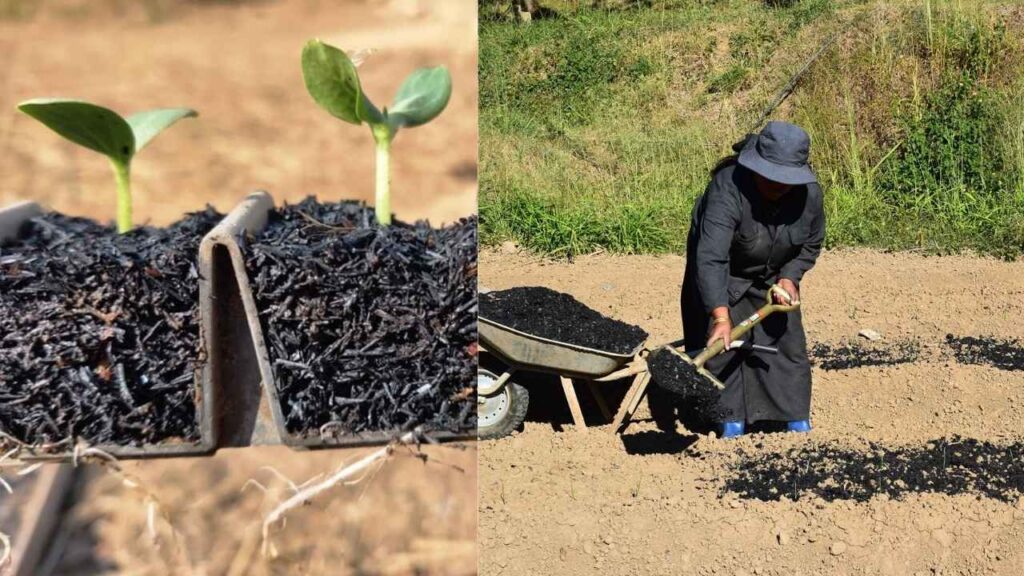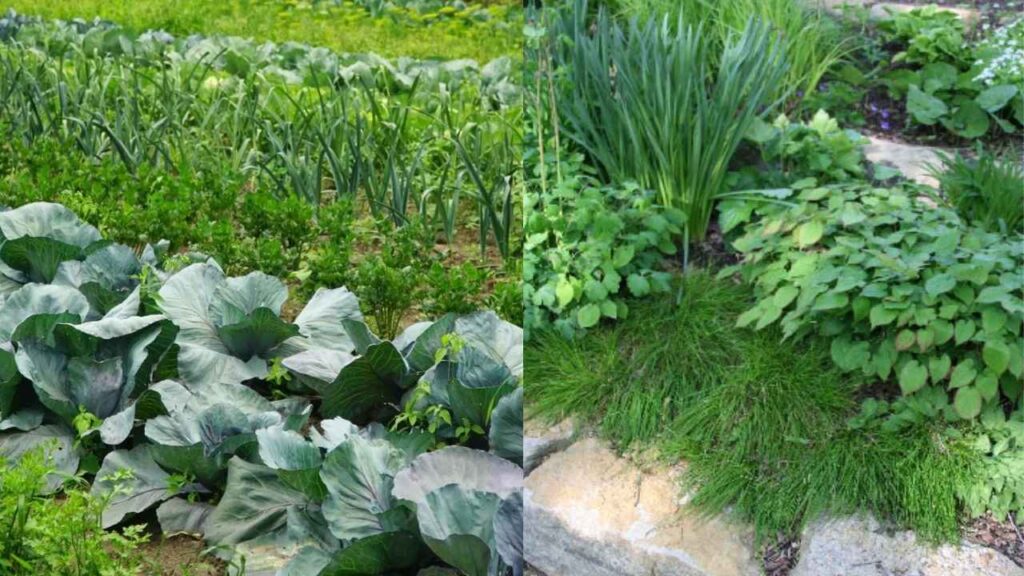If you’re passionate about nurturing a bountiful vegetable garden like I am, you’ve probably explored various ways to boost plant health naturally. One technique that has transformed my gardening game is organic mulching.
It’s more than just a protective blanket for your soil—it’s a dynamic tool that conserves water, enriches the soil, and promotes robust plant growth. Let’s dive deep into the world of organic mulching, explore its myriad benefits, and discover how to make the most of it in our vegetable gardens.
Understanding Organic Mulching
So, what exactly is organic mulching? In essence, it involves covering the soil surface with organic materials such as straw, leaves, or compost. This layer mimics the natural forest floor, providing a host of benefits that enhance plant growth and soil health. Unlike synthetic mulches, organic mulches decompose over time, adding nutrients back into the soil—a win-win for any gardener!
The Multifaceted Benefits of Organic Mulching
Water Conservation
One of the most significant advantages of organic mulching is its ability to conserve water. According to research published in the Agriculture Journal, mulching can reduce water evaporation from the soil surface by up to 70%. This is a game-changer, especially during hot summers or in arid regions. By maintaining consistent soil moisture, mulches reduce the frequency of watering, saving both time and resources.
Soil Temperature Regulation
Mulches act as insulators for your soil. They keep the soil cooler during scorching summer days and warmer during chilly nights. This temperature buffering is crucial for root development and can extend the growing season for certain vegetables.
Weed Suppression
A thick layer of mulch blocks sunlight from reaching weed seeds, preventing them from germinating. This natural weed control method reduces the need for chemical herbicides and manual weeding—a relief for your back and your schedule!
Soil Health Improvement
As organic mulches break down, they enrich the soil with organic matter. This process improves soil structure, enhances nutrient availability, and promotes beneficial microbial activity. Healthy soil leads to healthier plants and more abundant harvests.
Erosion Control
Mulches protect the soil from erosion caused by wind and rain. By holding the soil in place, they prevent nutrient loss and maintain the integrity of your garden beds.
Exploring Different Types of Organic Mulches
Choosing the right mulch can seem overwhelming with so many options available. Here’s a detailed look at some popular organic mulches and their specific benefits:
1. Straw and Hay
- Benefits: Excellent for moisture retention and weed suppression.
- Best For: Vegetable gardens with crops like tomatoes, peppers, and melons.
- Considerations: Use straw rather than hay to avoid weed seeds. Barley or wheat straw is ideal.
2. Grass Clippings
- Benefits: Readily available and rich in nitrogen.
- Best For: Nitrogen-loving plants like leafy greens.
- Considerations: Ensure clippings are from untreated lawns to prevent chemical contamination. Apply in thin layers to prevent matting.
3. Shredded Leaves
- Benefits: Improve soil fertility and attract earthworms.
- Best For: Around root vegetables and perennial plants.
- Considerations: Shred leaves before applying to speed up decomposition and prevent them from forming a dense layer.
4. Compost
- Benefits: Provides immediate nutrients and improves soil structure.
- Best For: All garden areas, especially where soil fertility is low.
- Considerations: Use well-aged compost to avoid burning plants.
5. Wood Chips and Bark
- Benefits: Long-lasting mulch that provides slow nutrient release.
- Best For: Pathways and around fruit trees.
- Considerations: May tie up nitrogen in the soil surface; consider adding nitrogen-rich fertilizers.
6. Pine Needles
- Benefits: Acidifies the soil over time, suitable for acid-loving plants.
- Best For: Blueberries and other acid-loving crops.
- Considerations: Lightweight and allow good air circulation.
7. Newspaper and Cardboard
- Benefits: Excellent weed barrier when layered thickly.
- Best For: Starting new garden beds or controlling aggressive weeds.
- Considerations: Avoid glossy prints; cover with another mulch type to improve aesthetics.
Recent Innovations in Organic Mulching
Biochar Integration
Biochar, a form of charcoal produced from plant matter, is gaining traction as a mulching component. It enhances soil fertility, improves water retention, and sequesters carbon. Incorporating biochar into mulch layers can lead to healthier plants and contribute to environmental sustainability.

Living Mulches
Living mulches involve planting cover crops like clover or buckwheat alongside your vegetables. These plants suppress weeds, improve soil health, and can be tilled back into the soil as green manure. They’re particularly beneficial in no-till gardening systems.

Best Practices for Applying Organic Mulch
To maximize the benefits of mulching, it’s essential to apply it correctly. Here’s how:
1. Prepare the Soil
- Weed First: Remove existing weeds to prevent them from pushing through the mulch.
- Moisture Check: Water the soil thoroughly before applying mulch.
2. Determine the Right Depth
- Optimal Thickness: Apply mulch in a layer 2-4 inches thick.
- Adjust for Material: Lighter materials like straw can be applied thicker; heavier materials like compost should be thinner to prevent compaction.
3. Mulch Placement
- Keep Away from Stems: Leave a small gap around plant stems to prevent rot and pest issues.
- Cover the Root Zone: Focus on the area directly over the plant’s root system.
4. Timing Matters
- Spring Application: Wait until the soil has warmed up to apply mulch in spring.
- Fall Mulching: Apply a thicker layer before winter to protect perennials and enrich the soil for spring.
5. Maintenance
- Refresh as Needed: Organic mulches decompose—add more material to maintain desired thickness.
- Monitor for Pests: Some mulches can harbor slugs or other pests; monitor and manage as necessary.
The Future of Organic Mulching: Trends and Potential
Biodegradable Mulch Films
Innovations in biodegradable mulch films made from plant starches offer the benefits of plastic mulch without environmental downsides. These films decompose naturally, reducing waste and labor for removal.
Enhanced Mulches
Research is underway to create mulches infused with beneficial microbes or nutrients. These enhanced mulches could boost plant health by delivering targeted soil amendments directly to the root zone.
Integration with Smart Irrigation
Combining mulching with smart irrigation systems can optimize water usage. Sensors can detect soil moisture levels under the mulch and adjust watering schedules accordingly, promoting water conservation.
Success Stories
Water-Wise Gardening in Action
In my own garden, I’ve experimented with straw mulch during a particularly dry season. By applying a 4-inch layer around my vegetable plants, I reduced my watering frequency by half. The soil remained moist beneath the mulch, and my plants showed no signs of water stress.
Combating Weeds Naturally
A friend of mine struggled with persistent weeds in her garden pathways. She applied layers of cardboard topped with wood chips. This combination not only suppressed the weeds effectively but also created an attractive and functional garden path.
Visual Guide to Organic Mulches
To help you choose the right mulch, here’s a quick reference table:
| Mulch Type | Benefits | Best For | Considerations |
|---|---|---|---|
| Straw | Moisture retention, weed suppression | Vegetable beds | Use straw, not hay |
| Grass Clippings | Nitrogen-rich, readily available | Leafy greens | Use untreated clippings, apply thinly |
| Shredded Leaves | Soil enrichment, attracts worms | Root vegetables | Shred before use to prevent matting |
| Compost | Nutrient-rich, improves soil structure | All plants | Ensure it’s well-aged |
| Wood Chips | Long-lasting, weed suppression | Pathways, perennials | May tie up nitrogen initially |
| Pine Needles | Acidifies soil, lightweight | Acid-loving plants | Good for blueberries |
| Newspaper/Cardboard | Excellent weed barrier | New beds, pathways | Cover with other mulch for aesthetics |
Conclusion
Organic mulching is a cornerstone of sustainable gardening. It harnesses natural processes to improve plant health, conserve water, and enrich the soil—all while reducing labor and environmental impact. By understanding the different types of mulches and how to apply them effectively, we can create thriving vegetable gardens that are both productive and eco-friendly.
So, grab those leaves, straw bales, or grass clippings and give organic mulching a try. Your garden will thank you with bountiful harvests and vibrant growth!
Join the Conversation
Have you tried organic mulching in your garden? What materials have worked best for you? Share your experiences and tips in the comments below. Let’s learn and grow together!
Happy Gardening!
